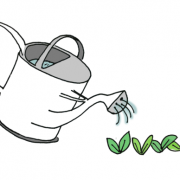Can Cabanyes project: reclamation of water and nature
Ajuntament de Granollers (2003-now)
1. LOCATION
Can Cabanyes (Catalonia – Spain)
X: 438917.67 Y:46022144.64
2. OBJECTIVES
To create a tertiary wetland for supplying reuse water to the city
To create a tertiary wetland for supplying reuse water to the city
To use alternative water resources in the watering of public green areas
To enhance the biodiversity with the creation of wetlands in Can Cabanyes
To put into practise an environmental best practise that can serve as an example at the local level
3. SOURCE OF WASTE WATER (WW)
The source of waste water is a mixture of industrial and domestic waters: Mixture The technical specifications according to the design data: WW flow/day: 30.000 m3/day BOD Biological oxygen demand: 250 mg O2/l
BOD Biological oxygen demand: 250 mg O2/l Suspended Solids: 200 mg O2/l Total N: 63 mg/l Total P: 10.7 mg/l
4. TYPE OF WATER REUSE
The Can Cabanyes system is an indirect reuse system where the reclaimed water is placed into a wetland (and later in tanks) before its distribution and use.
5. TREATMENT TECHNOLOGIES
5a) Treatment:
Conventional treatment in WWTP plus tertiary treatment in a constructed wetland WWTP 112.154 equivalent inhabitants 1 ha constructed wetland
5b) Post treatement desinfection:
6. TRANSPORT AND STORAGE
Network of pipes, tanks and pumps to distribute the reclaimed water from Can Cabanyes to the city
Transport and storage indicators:
7. USES
Green areas irrigation and maintenance of the ecological flow of river Congost
Uses indicators:
Total volume of reused water produced 120.000 m3/year
Agricultural uses:
Agricultural lands surface with reused water irrigation 0 Consumption of reused water in agriculture 0 Crops 0
Industrial uses:
Consumption of reused water in industry 00
Consumption of reused water in industry Sector (chemical, paper and pulp, beverage, textile…) 0
Urban uses:
Use (green areas, street cleaning, fire protection systems…) 5.000 m3/year
5.000 m3/year in watering green areas
(due to the rish of Legionella, the street cleaning has Consumption of reused water in each use (i.e. green areas) been temporaly discarded)
8. MAIN COSTS
Explain which are the main costs specific to water reuse and how is their frequency (transport, additional treatment…)
Main Costs indicators:
a) Investments
Cost of the project (until putting into operation) 231758,67 €
b) charges
Maintenance expenses 1000 (€/year) Consumables expenses 400 (€/year) Energy expenses 1100 (€/year)
9. BENEFITS
a) Environmental benefits
Efficient water management reduce water footprint use of alternative water resources Creation of a water body for the biodiversity Local production of water Excelent water resource in case of drought Reduction ot the consumption of underground water
Reduction ot the consumption of underground water Great contribution for the maintenance of water levels in the river Congost and wetlands in Can Cabanyes Better treatment of waste water before its urban use or its discharge in natural habitats Water reused is an excelent response to mitigate and adapt to the climate change
b) Economical benefits
Local management of the reused water network can optimize the supply costs Non-expensive maintenance of the system Save of fertilizers in gardening and agricultural uses Options to purchase the reused water to industrial users
Options to purchase the reused water to industrial users
c) Social benefits
Reuse water is a great strategy in areas with lack of water Great alternative resource in societies with water deficit due to the increasing demand of water The use of recycled water enables the reserve of the high quality water for the most demanding uses Reused water supply is reliable, because it isn’t dependent on weather variations or competes with drinking water supplies The production of reuse water with constructed wetlands contributes to the creation of new landscapes Quick response to the needs of local water demand on green areas
Quick response to the needs of local water demand on green areas
10. DISADVANTATGES/LIMITS
High initial investment Long-term profitability low social perception and lack of awareness of the benefits of water reuse Difficulties in the implementation in some industrial activities






